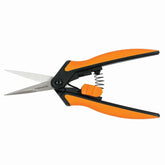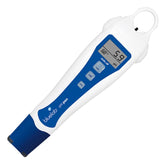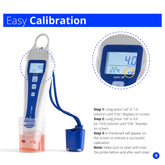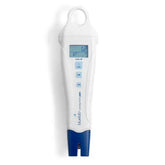Setting up a 5000 sq ft indoor cultivation facility demands meticulous planning and strategic investment. Essential aspects like lighting ($100K-$150K), nutrient management ($20K-$30K), and HVAC systems ($50K-$70K) are critical. Efficient space allocation and adherence to SOPs ensure regulatory compliance and maximize yields. Lakes Area Grow Co. excels in assisting growers to produce top-quality crops in the state through expert guidance on equipment selection, cultivation techniques, and compliance with industry standards. Their comprehensive support enhances productivity and ensures high-quality yields, making them a trusted partner for indoor cultivation success.
Comprehensive Guide to Setting Up a 5000 Square Feet Indoor Cultivation Facility
Setting up a 5000 square foot indoor cultivation facility is a complex yet rewarding endeavor that demands meticulous planning, strategic investment, and a thorough understanding of plant science, environmental systems, and regulatory frameworks. Whether you're growing cannabis, specialty herbs, or other high-value crops, the key to success lies in creating an efficient, scalable, and compliant operation that ensures optimal plant health, maximum yields, and consistent product quality.
In this comprehensive guide, we'll walk through every essential element involved in launching a 5000 sq ft indoor grow room—from lighting systems to HVAC, nutrient delivery, pest control, compliance, and ongoing optimization.
Table of Contents
-
Lighting Systems
-
Nutrients and Growing Medium
-
HVAC and Environmental Control
-
Irrigation and Water Management
-
Facility Layout and Space Allocation
-
Environmental Monitoring and Controls
-
Post-Harvest Processing: Drying and Curing
-
Standard Operating Procedures (SOPs)
-
Cost Breakdown and Budget Planning
-
Licensing and Regulatory Compliance
-
Integrated Pest Management (IPM)
-
Security, Software, and Tracking
-
Continuous Improvement and Scalability
-
Conclusion and Key Takeaways
1. Lighting Systems: The Engine of Indoor Plant Growth
Lighting is one of the most critical—and costly—components in any indoor cultivation facility. Plants rely on light to photosynthesize, grow, and flower. Therefore, choosing the right grow lights directly impacts your crop yield and quality.
Key Considerations:
-
Light Spectrum: Full-spectrum LED lights offer tunable wavelengths to support both vegetative and flowering stages.
-
Energy Efficiency: LEDs consume 40–60% less energy than HPS systems and generate less heat.
-
Coverage: Ensure an even PPFD (photosynthetic photon flux density) of 600–1000 µmol/m²/s across the canopy.
Estimated Investment:
-
High-end LED Fixtures (Commercial Grade): $100,000–$150,000
-
Brands like Fluence, Gavita LED, and Luxx are often used for commercial grows.
2. Nutrients and Growing Medium: Fueling Plant Performance
Plants require balanced nutrition delivered consistently through the right growing medium. Your choice of substrate—soil, coco coir, rockwool, or hydroponic systems—determines nutrient delivery, water retention, and microbial health.
Options:
-
Soil: Organic, easier for beginners, but harder to standardize.
-
Coco Coir: Excellent water retention and air flow, good for nutrient control.
-
Hydroponics (DWC, NFT, Drip): Maximum control, faster growth, but higher setup and maintenance requirements.
Nutrient Strategy:
-
Use a professional-grade, stage-specific nutrient regimen with precise pH (5.8–6.2) and EC targets.
-
Include micronutrients and beneficial microbes (e.g., mycorrhizae and bacillus).
Estimated Investment:
-
$20,000–$30,000 for base nutrients, supplements, pH/EC tools, and growing media for initial cycles.
3. HVAC and Environmental Control: Stabilizing the Climate
Maintaining ideal temperature (70–85°F) and relative humidity (40–60%) is vital for vigorous plant growth and preventing mold, mildew, and pests.
Key Components:
-
HVAC Systems: Precision control of temperature and humidity
-
Dehumidifiers and Humidifiers: Essential for RH control during veg and flower stages
-
CO2 Enrichment: Boosts photosynthesis; aim for 1000–1500 ppm during flower
Investment:
-
HVAC systems (design/build + install): $50,000–$70,000
-
CO2 systems and RH control: Additional $10,000–$20,000
4. Irrigation and Water Management: Precision Feeding
An automated irrigation system saves labor, reduces water waste, and ensures consistent feeding schedules.
Systems to Consider:
-
Drip Irrigation: Common in soil/coco grows; precise and scalable
-
Ebb & Flow: Great for small-scale hydro
-
Recirculating Hydroponics: High efficiency, high risk
Add inline filters, fertigation mixers, and a water storage tank (RO filtration recommended).
Cost Estimate:
5. Facility Layout and Space Allocation
Strategic layout planning directly influences your productivity and workflow efficiency.
Recommended Layout Zones:
-
Cloning/Propagation Room: 5–10% of total area
-
Vegetative Area: 30–40%
-
Flowering Area: 40–50%
-
Drying/Curing Room: 5–10%
-
Storage and Packaging: As needed
Use rolling benches, vertical racking, and aisle spacing to optimize square footage and plant count.
6. Environmental Monitoring and Controls
Automated monitoring ensures environmental parameters stay in optimal ranges.
Key Tools:
-
Digital controllers for temp, humidity, CO2
-
VPD (Vapor Pressure Deficit) meters
-
Data logging sensors for remote access
Cost: $10,000–$25,000 depending on sophistication (e.g., TrolMaster, GrowLink, Argus)
7. Post-Harvest Drying and Curing
Poor post-harvest practices can ruin months of hard work. Create a dedicated drying and curing room with:
Curing in glass jars or climate-controlled rooms improves aroma, flavor, and cannabinoid expression.
8. Standard Operating Procedures (SOPs)
Documented SOPs improve staff efficiency, reduce errors, and ensure consistency.
Must-Have SOPs:
Use task management software to enforce SOP adherence and accountability.
9. Cost Breakdown and Budget Planning
| Component |
Cost Estimate |
| LED Lighting |
$100,000–$150,000 |
| Nutrients & Growing Media |
$20,000–$30,000 |
| HVAC System |
$50,000–$70,000 |
| Irrigation System |
$15,000–$25,000 |
| Monitoring & Environmental Controls |
$15,000–$25,000 |
| Software & Tracking Systems |
$20,000–$30,000 |
| Total Estimated Budget |
$220,000–$330,000 |
Note: Excludes construction, licensing, staff salaries, and ongoing operational costs.
10. Licensing and Regulatory Compliance
Every jurisdiction has strict rules governing plant count, canopy size, pesticide use, labor practices, and waste management.
Key Compliance Areas:
-
State licensing (e.g., cultivation, manufacturing, distribution)
-
Fire and safety inspections
-
OSHA and labor compliance
-
METRC or BioTrack tracking requirements
Failing to comply can lead to license suspension, fines, or shutdown.
11. Integrated Pest Management (IPM)
Effective pest management balances prevention, monitoring, and intervention.
IPM Practices:
-
Regular scouting with sticky traps
-
Biological controls (e.g., predatory mites, nematodes)
-
Botanical oils and microbial sprays
-
Avoid overuse of harsh chemicals to prevent resistance
12. Security, Software, and Operational Tracking
Commercial operations often require:
Software like Canix, Trym, or MJ Freeway can streamline compliance and inventory.
13. Continuous Improvement and Scalability
Track KPIs such as grams per watt, grams per square foot, crop cycle time, and labor efficiency. Continually experiment with:
-
New genetics and phenotypes
-
Lighting cycles
-
Environmental tweaks (VPD, CO2, spectrum)
-
Tech upgrades (AI, automation)
Regular performance reviews and data logging enable sustained improvements and adaptability.
Conclusion: Building a Profitable, Scalable Indoor Grow Facility
Launching a 5000 square feet indoor cultivation facility is no small feat—it’s a capital-intensive venture requiring technical expertise, regulatory diligence, and operational precision. From LED lighting and HVAC design to nutrient delivery, SOPs, and pest management, each component plays a vital role in the overall success of your cultivation business.
By planning thoroughly and partnering with experienced consultants like Lakes Area Grow Co., you can ensure compliance, maximize yields, and position your operation for long-term profitability and success in the rapidly evolving indoor cultivation industry.
Get Expert Help from Lakes Area Grow Co.
At Lakes Area Grow Co., we specialize in helping cultivators design, set up, and optimize grow operations of all sizes. Our tailored consulting packages, industry knowledge, and hands-on support can guide you through every step of your journey—from licensing to first harvest and beyond.
Contact us today to learn how we can help you bring your indoor grow vision to life.







Leave a comment
Please note, comments need to be approved before they are published.